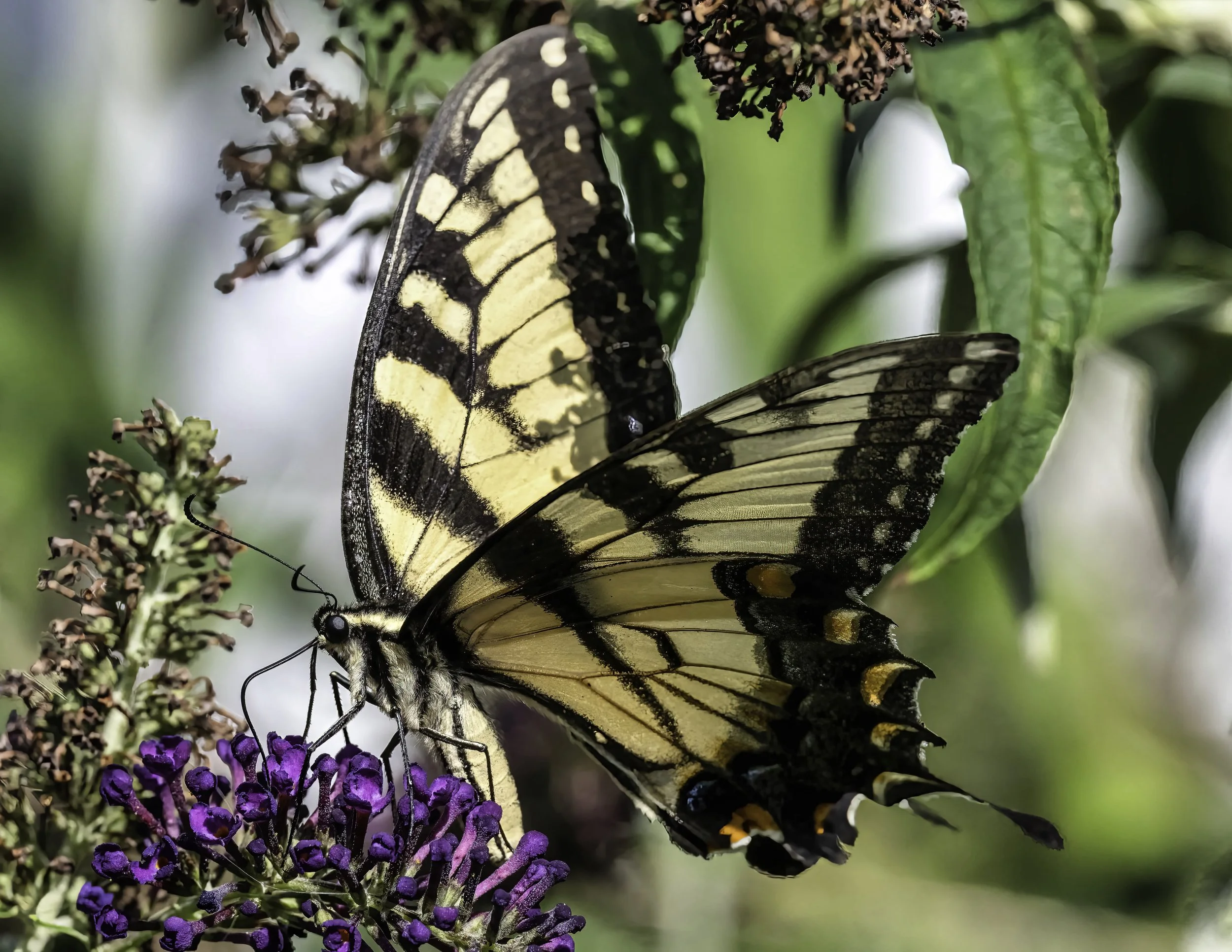Butterfly Garden
Several years ago, we established a butterfly garden along the side of our home. Over the years, it has been a constant source of enjoyment as a wide variety of butterflies and bees have come to visit it during what we refer to as the “birding doldrums”. To be honest, our property, limited in size as it is (100 X 75) does attract a fair amount of avian wildlife, but as the summer months tend to get hotter and hotter, the birdlife has quieted down significantly. Now that August is approaching, the butterflies are beginning to show up and give us an alternative to birding on those especially hot days.
Among the earliest visitors, the Silver-spotted skipper is the most reliable. Each summer, around mid-July and well into August, this skipper takes advantage of the Buddleia bush with its many purple blossoms. The The Silver-spotted skipper (Epargyreus clarus) is a distinctive butterfly commonly found in North America, recognizable by its large size and prominent silver-white spot on the underside of its hindwings. This species thrives in open woodlands, fields, and gardens like ours, where it feeds on nectar from a variety of flowering plants. The Silver-spotted Skipper plays an important role in pollination and adds vibrant activity to natural landscapes during the summer months.
While not as colorful as the Silver-spotted skipper, the Dun skipper is another species which shows up each summer. Much smaller than the Silver-spotted species, the Dun skipper is known for its distinctive brownish-orange wings with subtle markings. Typically inhabiting grassy meadows and open woodlands, this butterfly favors habitats rich in native grasses, which serve as larval host plants. The Dun skipper’s flight period usually occurs from late spring through mid-summer, during which it actively feeds on nectar from various wildflowers. Its relatively short lifespan and quick, darting flight pattern make it a challenging subject for nature photographers interested in capturing detailed images of this elusive insect (especially when being harassed by bees such as this Carlin’s Mining Bee!)
Peck’s skipper
Peck's skipper (Polites peckius) is a small butterfly commonly found in North America, particularly in open woodlands, grassy fields, and meadows. It belongs to the family Hesperiidae, known for their rapid and skipping flight patterns. More starkly patterned than the Dun skipper, Peck's skipper displays a distinctive orange and brown coloration with markings on its wings, aiding in camouflage among grasses. Like other skippers visiting New York, this butterfly is active during the warmer months, and its presence contributes to local biodiversity and pollination.
A much easier butterfly to photograph is the Eastern Tiger Swallowtail. These swallowtails exhibit what is known as sexual dimorphism meaning that the two sexes can be determined by certain distinctive characteristics. This is a typical male coloration of yellow with black stripes (like a tiger naturally) while the female may either be much darker or similar in color to the male except for iridescent blue on the hind wings. Females also tend to be larger than the males. In any case, these are some of the most beautifully patterned and easily recognizable butterflies to visit our garden.
As mentioned in earlier posts, butterflies are not the only insects to visit our garden. Bees are a welcome sight and trying to identify the many species which cone to the flowers of the garden can be daunting. This gorgeous little sweat bee is called the Bicolored Striped Sweat Bee. This diminutive bee is easy to identify because of its bright metallic green head and thorax and its striped abdomen. Again, these insects exhibit sexual dimorphism. The White and black stripes indicate that the individual is a female while yellow and black stripes are found on males. (On occasion, however, some females can have a sold green abdomen).
Bicolored striped sweat bee
Can you tell what sex our visitor to the butterfly garden this afternoon is?





